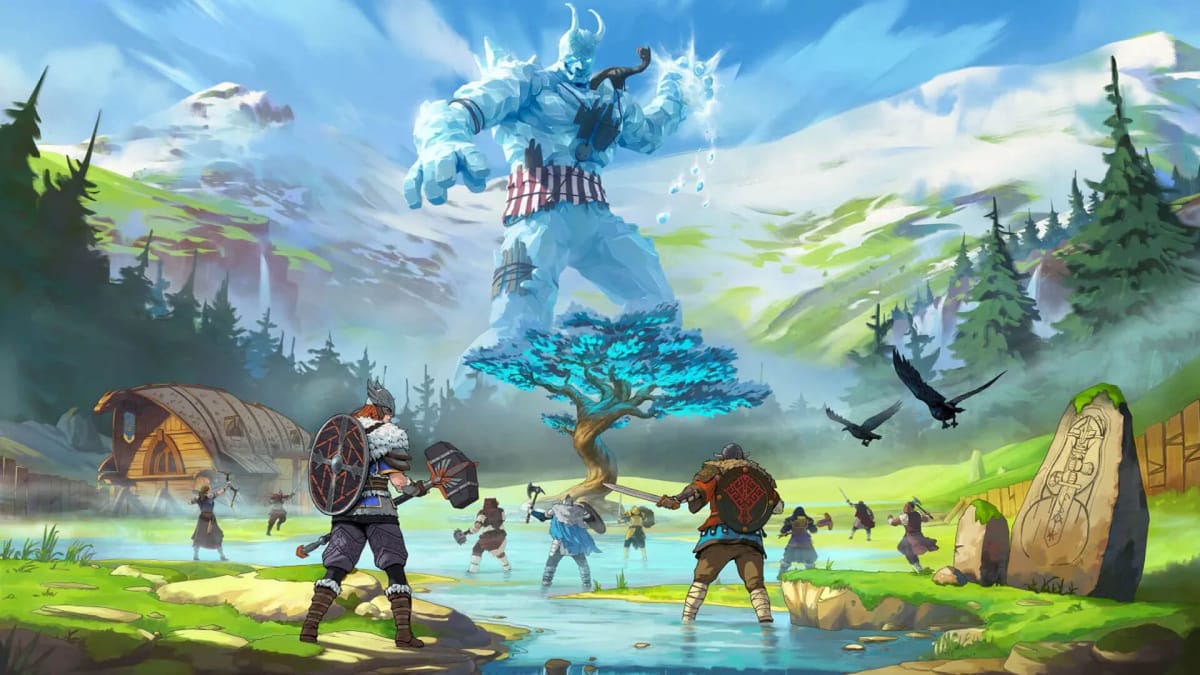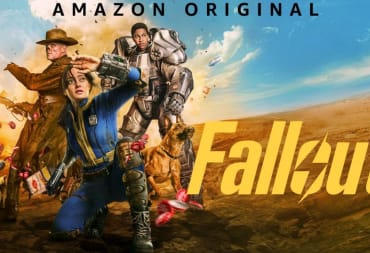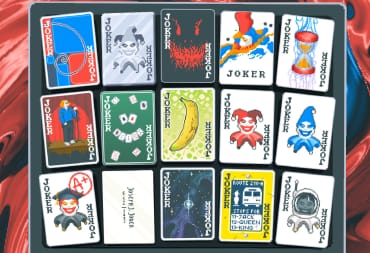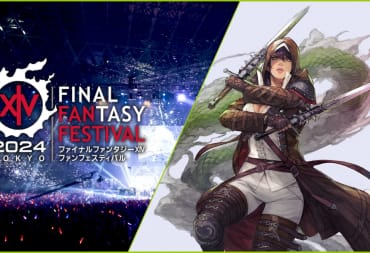It’s getting to the point where you can start making a case that there are more games about Norse Mythology than there is Norse Mythology. Ancient tales of fantasy and folklore from around the world have inspired countless games and series, with those of Norse Mythology being one of the most popular. This is due to its complex structure, interesting characters, and sheer brutality at times. Tribes Of Midgard is a roguelite strategy that covers perhaps the most well-known story from the mythos, Ragnarok. However, games have been known to take liberties with established stories for the purposes of gameplay. With the help of academic Daniel McCoy’s research, we’ll see just how many things Tribes Of Midgard gets right.
What Is Ragnarok?
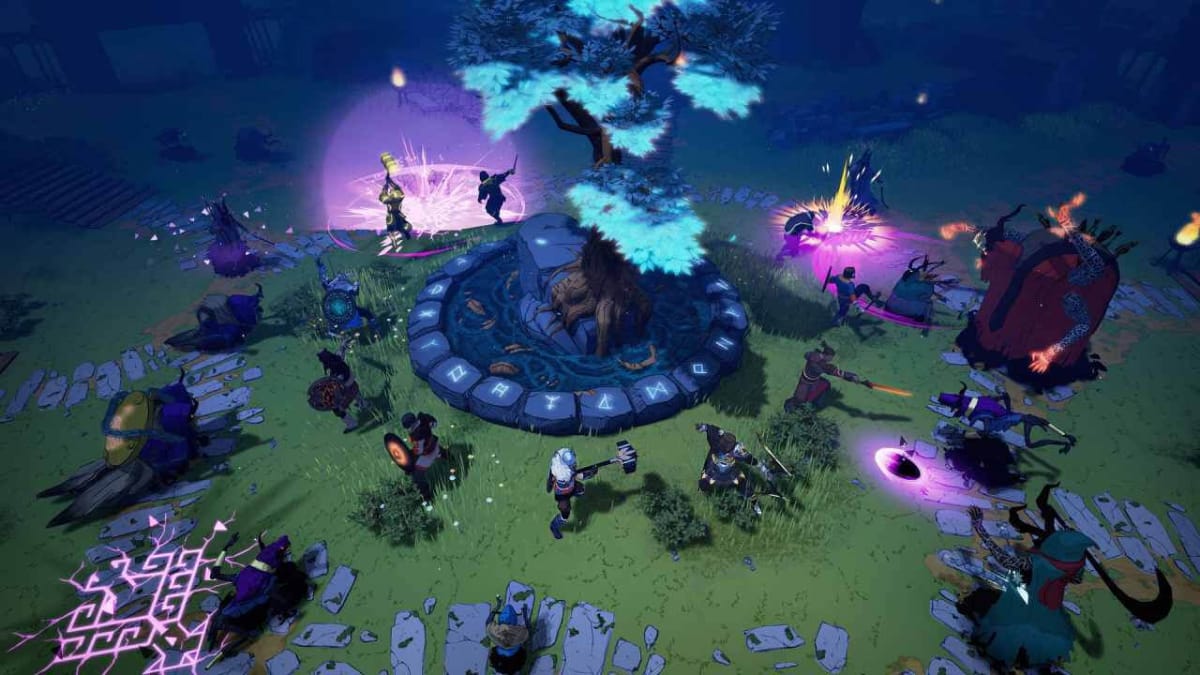
Every ancient culture has its own interpretation of how the world and sometimes the whole universe will end. The Norse version of this event is known as Ragnorok, which involves a conflict between the gods and all the other beings on Earth. As with any such event, there is a series of events that precedes and foreshadows the coming doom.
First, is the start of what is loosely translated as "Fimbulwinter." This is a harsh and devastating winter that will last three seasons with no reprieve. It’s described as such a harsh period of time that humans will be pushed to the brink. With all forms of food and resources being wiped out by the winter, humans will soon turn on each other in order to survive.
Following or even perhaps during this time, the giant wolves Skoll and Hati will catch the sun and the moon which will darken the skies.
Then there’s the world tree Yggdrasil. The purpose of this tree is to hold the cosmos and the nine realms in balance. However, the tale describes that Yggdrasil will tremble which will break the balance. This will also cause all the trees and mountains to be destroyed.
With the balance broken, the chains holding Loki the Trickster God and the giant wolf Fenrir (Loki’s son) will break, allowing them to run free and cause chaos. Another of Loki’s children, the giant serpent Jormungand whose body wraps around the Earth, will rise from the ocean and join the mayhem.
The earthquakes caused by the serpent will allow for the dreaded ship Naglfar ("Nail Ship") to sail across the rising water. It will carry an army of destructive giants into the final battle and Loki will assume control as their captain.
A final guest to this encounter will be the giants of Muspelheim. Being a realm of heat and fire, these giants will be lead by Surt, wielding a giant flaming sword.
Each of these forces will inflict their own destruction upon the Earth, and the gods will finally decide to enter the battle. For the most part, the gods and forces of chaos will engage in one-on-one fights will eventually end in their mutual demise. After everyone has fallen, what remains will sink into the sea and be swallowed by the void.
While some versions say that this is where it ends, there are tales that describe a new world being created with different beings ruling over it.
What Is Tribes Of Midgard About?
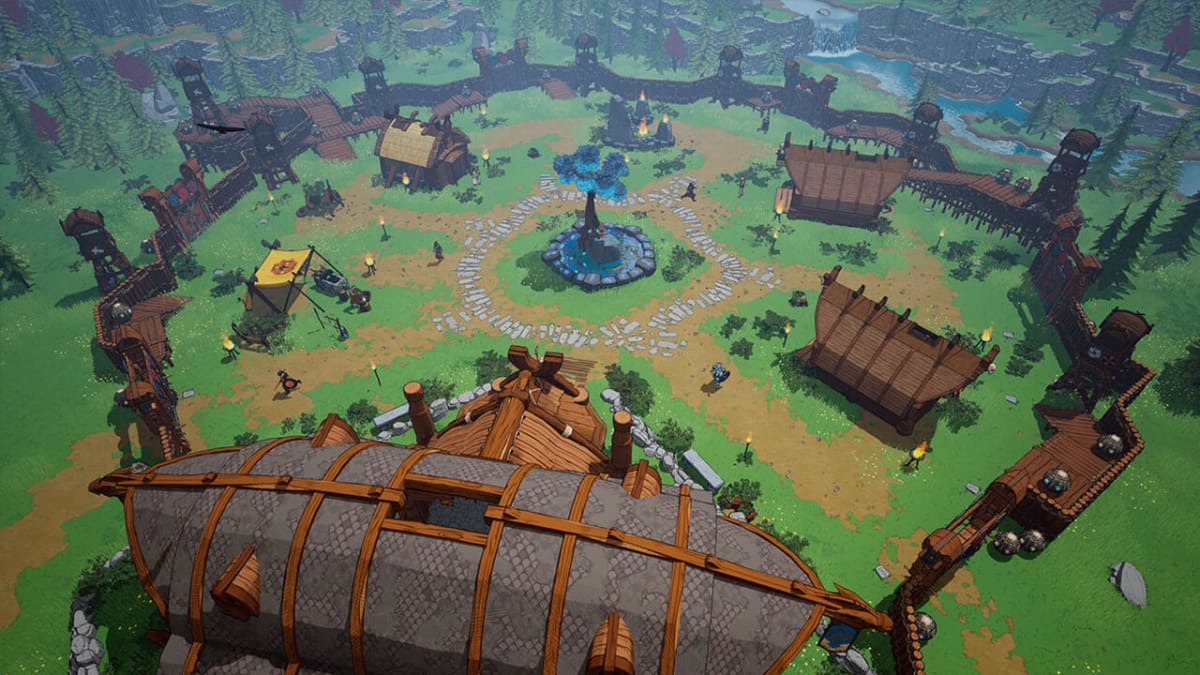
As you can probably guess, Tribes Of Midgard is about Ragnarok, or more accurately, trying to stop it. The game’s lore explains that the world tree Yggdrasil shed some seeds across the realms. These seeds grew into smaller versions of said tree and thus generated a lot of energy and prosperity. However, the forces of chaos are seeking to destroy these trees to undo the balance and usher in the end. You (and maybe other players) play as einherjar, warriors from Valhalla who were hand-picked by Odin. It’s up to you to protect these trees to maintain the balance for as long as you can. You’ll need to be combat-ready and resourceful to endure the dangers to come since your enemies will only grow in strength as time goes on.
Tribes Vs. Norse Lore
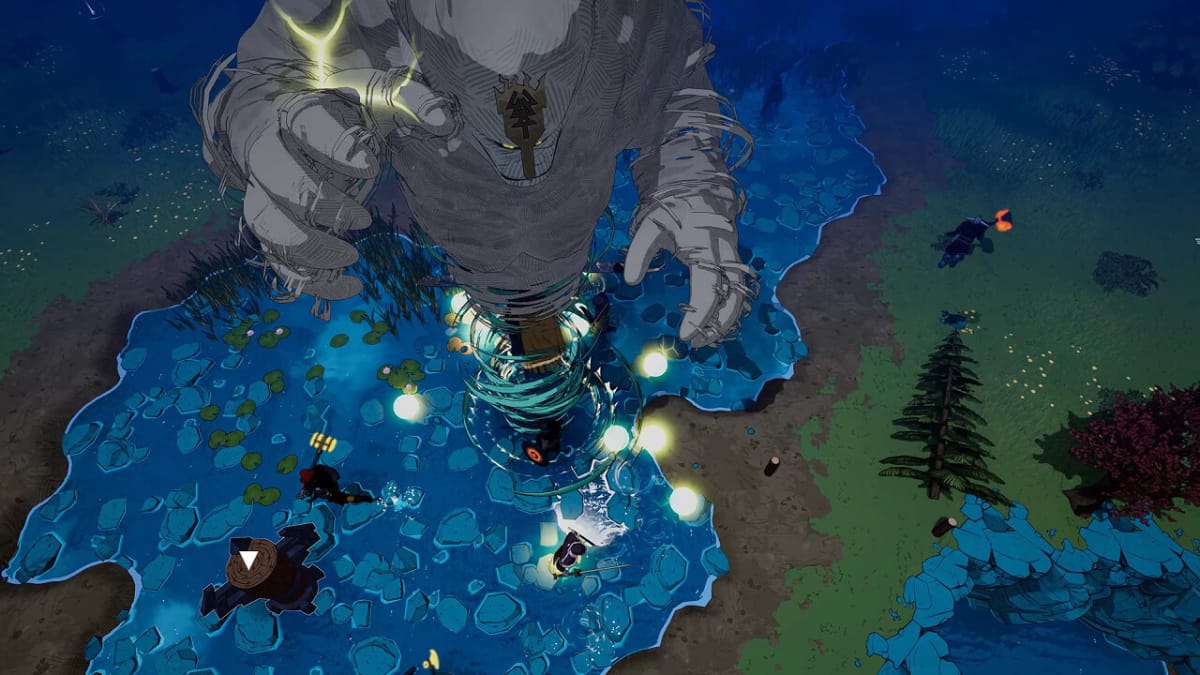
Since Tribes Of Midgard revolves around Ragnarok, there’s a huge pool of elements to consider. In the context of the game, Ragnarok is about to begin, and the only thing keeping it from starting is the many Yggdrasil saplings scattered around Midgard. As one of the einherjar, it’s your job to keep them healthy and protect them from hostile forces.
Let’s start by addressing the concept of einherjar. These warriors do indeed play a role in Ragnarok and were selected by Odin in order to aid the gods in battle. However, in this situation, you and others have to work long and hard to prevent this calamity as the gods are nowhere to be seen.
Next, let’s talk about the state of the world. Despite being on the edge of the end, Midgard seems to be doing quite well. Stories about Ragnarok always begin with Fimbulwinter, but that’s not happening to the Tribes Of Midgard. In fact, there’s an abundance of animal and plant life to find and grind for resources. The regions are vast and diverse with all manner of ecosystems that seem to be holding together quite well.
The main conflict in this game occurs at the home base where your Yggdrasil sapling lies. Time is broken into a day and night cycle, and when night rolls around, creatures from Hel (Norse Underworld) will take this opportunity to assault your base and attack the tree. There’s a lot wrong here, but let’s begin with Hel. Though ruled by Loki’s daughter (also named Hel) who doesn’t have the best track record, the Norse underworld was not actually depicted as a place of damnation. To put it simply, many Vikings saw it as a neutral place where life went on as usual… just underground. As such, it wasn’t seen as a place full of demons and monsters (called Helthings in-game) that are just itching to get into Midgard to cause havoc. In fact, the role of Hel (both the place and person) seems to be minimal to nonexistent in bringing about Ragnarok.
Lastly, a review of the different creatures you’ll encounter in Tribes Of Midgard. Aside from the usual fair of wolves and some supernatural ones like werewolves, you’ll fight humanoids called Dokkalfar (dark elves). While Norse Mythology does discuss elves, they’re nothing like those encountered in the game. Instead, elves are bright beings known for their beauty and sheer elegance. Despite having human-like features, they’re much closer to being gods than mortals. Despite this, elves were known to have negative effects on humans, but not to the degree that they would form neighboring camps and attack them.
Aside from the Helthings and Dokkalfar, the more prominent threats you’ll have to deal with are the Jotnar (Giants). The Jotnar have always played a giant role in Norse mythology, usually that of a villainous or destructive one. They are considered to be beings of pure chaos and so relish in the idea of Ragnarok. Giants are typically defined by whatever realm they hail from yet despite this, Surt is one of the only named giants to have a defined elemental power. However, that doesn’t mean that elemental Jotnar won’t stomp ominously towards your sapling. It’s likely that the game combines the idea of giants with another mythological being known as land spirits.
Lore Galore
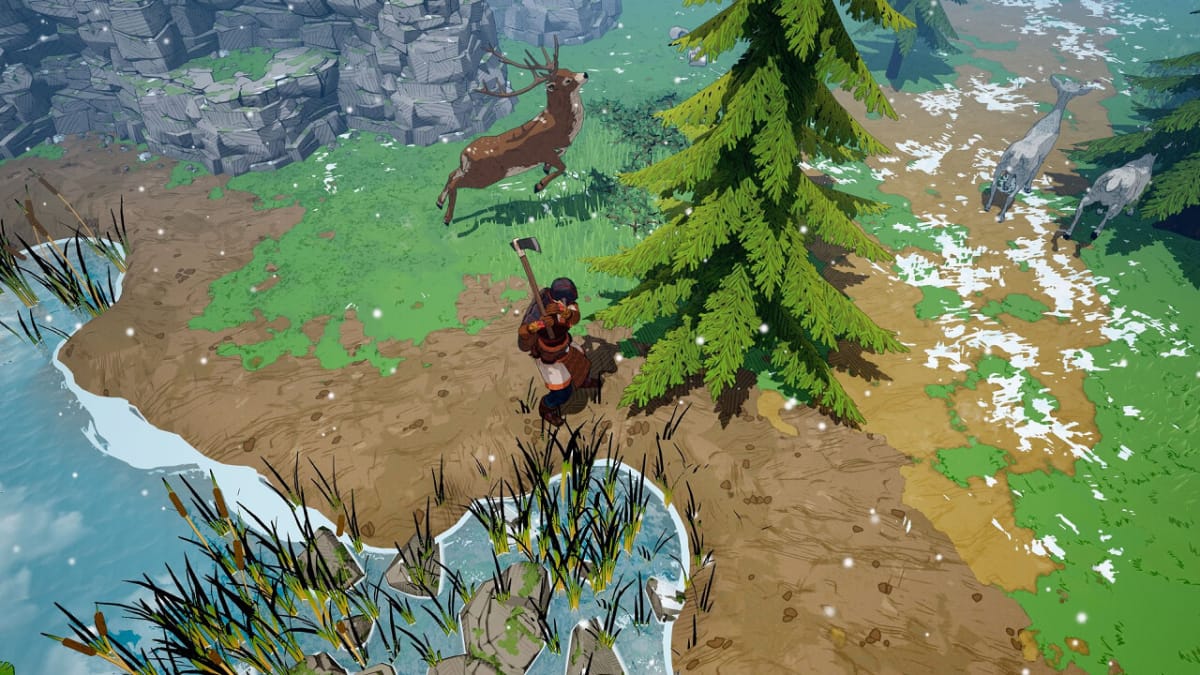
Tribes Of Midgard has taken a lot of liberties with the Norse story of Ragnarok in order to create a challenging game. While it's not entirely accurate, it introduces people to ideas that aren’t well-known such as the einherjar. It’s also thanks to creative interpretations that we may be encouraged to look up and learn about the lore ourselves. This led us to learn and discover even greater details behind Ragnarok and the elements connected to it. Games like this can help us gain a better understanding and appreciation for Norse Mythology.
A big thanks to Daniel McCoy, author of The Viking Spirit: An Introduction To Norse Mythology And Religion.
Have a tip, or want to point out something we missed? Leave a Comment or e-mail us at tips@techraptor.net
